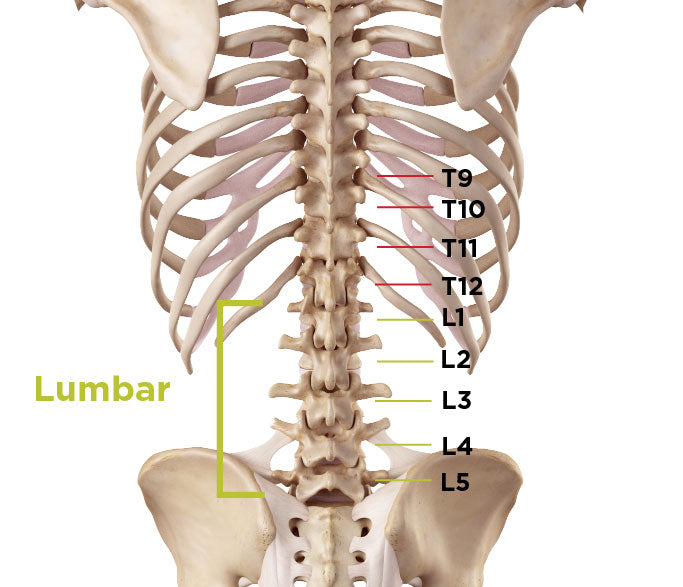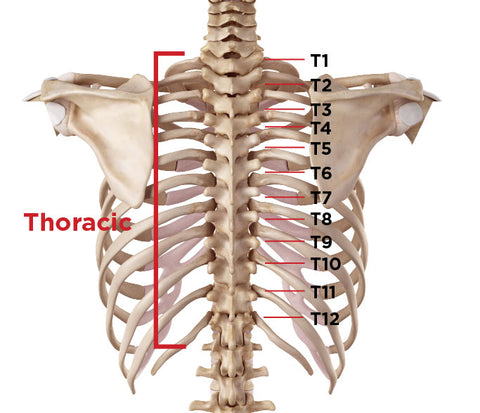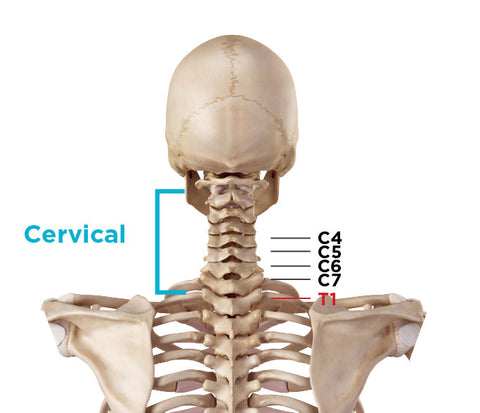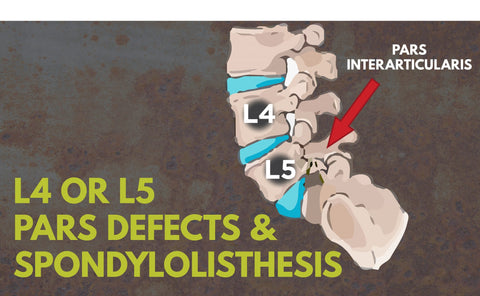Herniated Disc
What is a Herniated Disc? What are the Symptoms?
 At birth, your spinal discs are composed of around 80% of water but as you age, you tend to lose some of this water content. In order for your spine to function properly, these discs must be well hydrated. When these discs lose that water content, they become less flexible, leading to a herniated disc. A herniated disc is when the inner core ruptures, it then pushes through the crack of the outer piece. Aside from the inner core rupturing, a blow to your back or fall may also cause a herniated disc. Your spine is made up of 26 bones, called the vertebrae. In between your vertebrae, there are 23 soft discs that help support and keep your spine in place. These discs are compared to a jelly donut, with a hard or tough outer piece (annulus fibrosus) and a soft inner piece (nucleus pulposus).
At birth, your spinal discs are composed of around 80% of water but as you age, you tend to lose some of this water content. In order for your spine to function properly, these discs must be well hydrated. When these discs lose that water content, they become less flexible, leading to a herniated disc. A herniated disc is when the inner core ruptures, it then pushes through the crack of the outer piece. Aside from the inner core rupturing, a blow to your back or fall may also cause a herniated disc. Your spine is made up of 26 bones, called the vertebrae. In between your vertebrae, there are 23 soft discs that help support and keep your spine in place. These discs are compared to a jelly donut, with a hard or tough outer piece (annulus fibrosus) and a soft inner piece (nucleus pulposus).
Although some individuals may not experience any symptoms or pain, others may have irritation of the surrounding nerves. Lower back pain is usually the initial symptom leading to a number of other symptoms.
- Arm or leg pain: Depending on the location of your herniated disc (lumbar, thoracic, or cervical), you’ll typically feel intense pain in the nearby arm or leg when you move around.
- Numbness/tingling: Experience numbness or tingling in the area that is affected.
- Weakness: Results in your muscles weakening, making you prone to accidents, stumbles, or inability to carry or lift items.
- Loss of bladder/bowel control (rare cases): This may lead to a more serious problem called cauda equina syndrome, caused by the spinal nerve roots being compressed.
What Leads to a Herniated Disc?
Aside from a blow to your back and natural aging of your spine, there are other factors that may increase your chance of a herniated disc. Being educated on these factors can help you prevent and lower your chances of suffering from this condition:
- Gender: Men between the ages of 30-50 have a higher chance of a herniated disc.
- Incorrect lifting techniques: When lifting heavy objects, if you tend to lift with your back instead of your legs you are likely to suffer from a herniated disc. This lifting puts extra strain and tension on your spine making it vulnerable to wear and tear.
- Weight: Being an overweight individual puts pressure on the discs in your back. They have to work harder in order to keep your spine in the correct position.
- Driving: If you find yourself driving frequently or have an occupation that requires you to be in a car for long period of time, this may increase your chance of a herniated disc. Staying in a seated position for long period of time compresses your spine.
- Smoking: Smoking reduces the oxygen supply to your spine and can lead to degeneration of your discs.
- Genetics: Some individuals may be predisposed or may have a higher chance of developing a herniated disc.

Lumbar Herniated Disc
Around 90% of all herniated discs occur in the lumbar spine area. This usually occurs at L4-L5 and L5-S1 region of the spine. Since this nerve runs through the leg, any type of pinched nerve in the lower lumbar area caused pain to radiate through the buttock and leg. This is also called sciatica, which is when a herniated disc compresses part of the nerve.
Symptoms for these regions of the spine include:
- L5 segment: Weakness in the big toe and ankle, numbness and pain on the top of the foot and the buttock.
- S1 segment: Loss of ankle reflexes and weakness, numbness, and pain in the sole or outside of the foot.
BraceAbility has many different treatments for lumbar disc injuries including our bariatric low back support belt, heat and ice therapy wrap, lumbar spine decompression brace, and lumbar back brace.
 Thoracic Herniated Disc
Thoracic Herniated Disc
A herniated disc in the thoracic spine area is very rare and uncommon. When herniated discs do occur in the thoracic area, they usually do not cause any pain or symptoms. Thoracic herniated discs are caused by either degenerative disc disease or trauma to the upper back. Common location for this herniated disc is at the thoracolumbar junction (T8-T12) located in the mid back.
For thoracic herniated disc pain, we recommend our back brace for a herniated disc or comprehensive LSO spine stabilizer.
Don’t think you have a herniated disc but are experiencing pain in your thoracic region? Learn about different thoracic spine and back pain.
 Cervical Herniated Disc
Cervical Herniated Disc
The cervical spine consists of seven stacked vertebrates leading up your neck. A herniated disc in the cervical spine area is less common than a lumbar herniated disc because it has a shorter or fewer amount of disc material. In addition, there is less force pushed upon the cervical spine area compared to the lumbar area. This usually occurs at segments C4-C5, C5-C6, C6-C7, or C7-T1. Since these discs are relatively small, there is not a lot of space available for the nerves. This makes your cervical area prone to significant pain even with just a small herniation.
Symptoms for these regions of the spine include:
- C4-C5 segment: Weakness in the deltoid muscle of the upper arm and mild shoulder pain.
- C5-C6 segment: One of the most common areas for a cervical herniated disc. Causes weakness in the biceps and in the wrist. Pain, numbness, and tingling radiating in the thumb side of the hand is also a symptom.
- C6-C7 segment: Another common area, causes weakness in the triceps and the muscles of the fingers. Also, numbness or tingling along the triceps down into the middle finger may be a symptom.
- C7-T1 segment: Leads to weakness in the hands, along with numbness, pain, and tingling down the arm.
For a cervical spine herniated disc, we recommend our cybertech CSI spine immobilizer to help ease your pain and discomfort.
How Can I Treat a Herniated Disc?
Luckily, herniated discs usually heal on their own. It’s recommended to use conservative methods of treatments initially to help ease your pain and lower the chances of your condition worsening. There are many different treatment options including:
- Heat or cold: Cold packs can be applied to help relieve swelling and inflammation. Apply them for the first few days then switch to low heat to help give your back extra comfort.
- Avoiding bed rest: Although you want to avoid doing strenuous activity, it’s advised to not stay in bed or rest for too long. Too much bed rest makes your spine stiff and weak, try resting for periods of 30 minutes then getting up and taking a walk.
- Brace supports: Immobilizing the spinal area with a brace will help heal and ease the pain of your herniated disc. The time you wear these herniated disc braces will depend on the severity and the location of your herniation.
- Pain relievers: Anti-inflammatory medications such as ibuprofen, Advil, or Motrin may help reduce your pain.
- Other medications: If your pain doesn’t reside, your doctor may prescribe nerve pain medications, muscle relaxers, or cortisone injections.
-
Physical therapy treatments: These different treatments below help to relieve pressure on the nerve root.
- Deep tissue massage
- Hydrotherapy
- Transcutaneous electrical nerve stimulation (TENS)
- Traction
Unfortunately, conservative treatments aren’t always the right option. Surgery may be required in some cases to help treat a herniated disc. There are different techniques or procedures to reduce the pain you may be experiencing:
- · Discectomy (open or a microdiscectomy): Removal of all or part of the herniated disc.
- · Laminectomy: Removal of the bone arch known as the lamina of the vertebra.
- · Laminotomy: Making an opening in the vertebral lamina to create more space for the nerve roots.
- · Spinal fusion: Using hardware and bone grafting to fuse two or more vertebrae together.
- · Artificial disc surgery: Replacing a herniated disc with an artificial one.
Can I Prevent a Herniated Disc?
Most of the time, herniated discs are caused by your age, and degeneration of your spine. Fortunately, there are ways to help strengthen and keep your spine in the best condition to help reduce your chance of suffering from a herniated disc.
- Exercise! While there’s no surprise that exercise can help prevent injury, strengthening the trunk muscles will help stabilize and support your spine. In addition, core exercises such as yoga and Pilates will help against a herniated disc. Biking, walking, and swimming are also great exercises that can help prevent this injury.
- Stretching. Simple stretching every day can help stop the initial symptoms of a herniated disc and can help make your spine more limber.
- Maintaining good posture. Good posture has numerous benefits including relieving chronic neck and back pain, reducing migraines, and giving you more energy and confidence. Good posture also helps to reduce the pressure that is put on your spine or back; in addition, it helps train your back to properly lift heavy objects. Try our posture corrector to help train and strengthen your neck, back, and shoulder muscles.
- Maintaining a healthy lifestyle and weight. As mentioned above as one of the underlying causes of a herniated disc, excess weight puts more pressure on your spine and discs. This extra weight makes your spine work harder, leaving it more prone to herniation. Eating a well-balanced diet and maintaining a healthy weight can help prevent this extra work.








 Thoracic Herniated Disc
Thoracic Herniated Disc Cervical Herniated Disc
Cervical Herniated Disc

